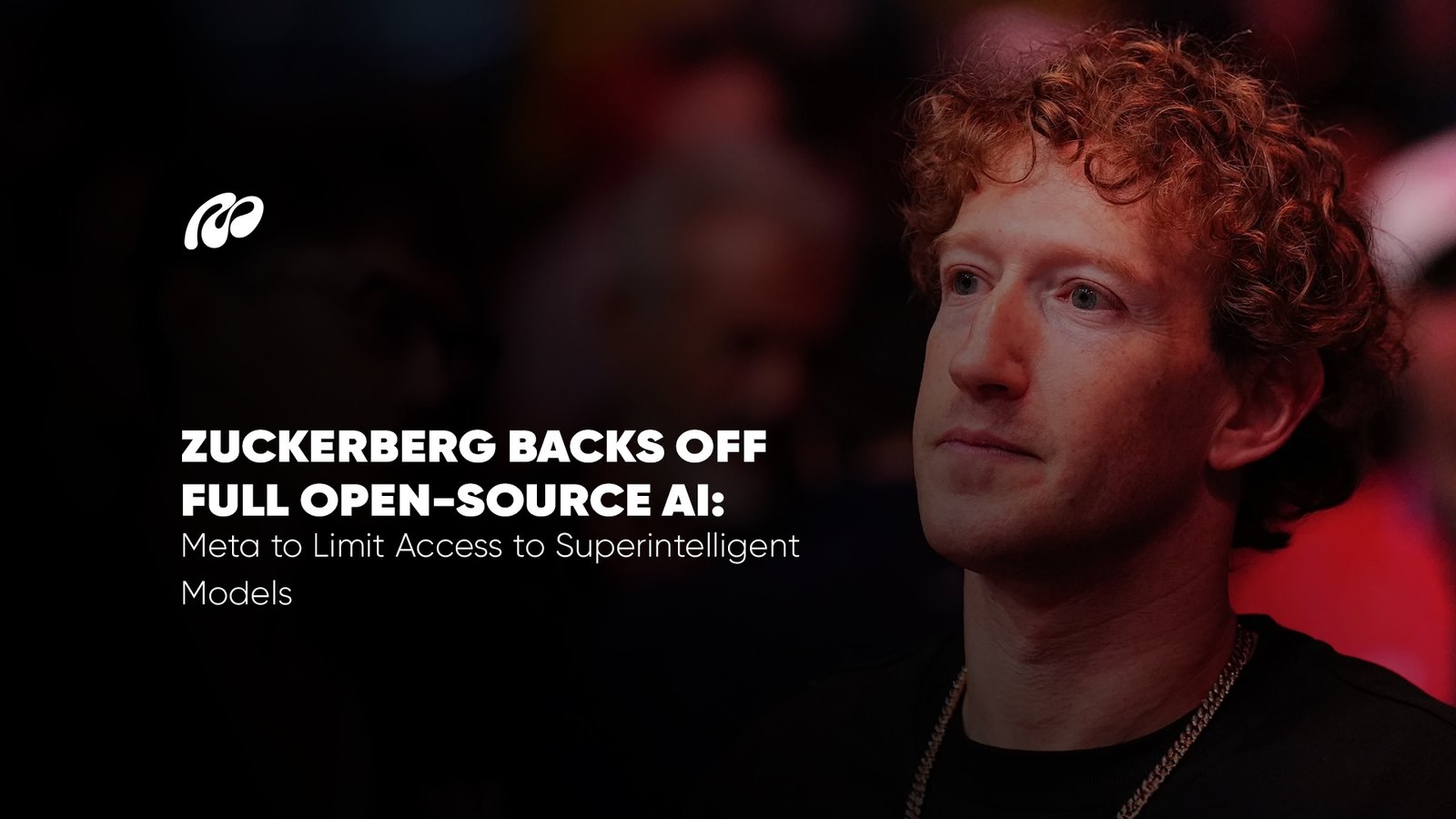Summary
- Meta AI will limit access to its upcoming superintelligence models, signaling a shift from open-source norms.
- Zuckerberg confirms concerns over misuse as the driver behind the controlled release of new AI models.
- Internal restructuring, including Meta layoffs 2025, raises questions like is Meta a good investment in the current climate.
- Earlier successes like Meta LLaMA will still inform future development, but under stricter control moving forward.
Mark Zuckerberg has confirmed that the Meta company will not fully open-source its next wave of superintelligence models. While earlier iterations of Meta AI, particularly Meta LLaMA, were celebrated for their open-access approach, the company is now taking a more controlled path. This pivot reflects growing global scrutiny around powerful AI models, especially in how they may be used and potentially misused.
Zuckerberg shared this strategy shift during a closed meeting and later clarified the direction in public remarks. While he acknowledged the value of newsletter open source efforts and community innovation, he emphasized that future models would be released under “responsible access” guidelines. The goal, according to Zuckerberg, is to ensure safety and governance as Meta AI pushes closer to building systems with general reasoning capabilities, often referred to as superintelligence.
In tandem with this shift, the Meta company has ambitious financial plans. As outlined in the update at Meta sets bold 1.4 trillion revenue goal, the company intends to make AI its most dominant revenue source by 2035. Yet that growth is now tightly coupled with internal regulation. Zuckerberg stressed that Meta will not risk making dangerous AI public in the name of open-source purity.
Closed vs. Open-Source AI
The debate over openness in artificial intelligence is more intense than ever. Historically, Meta stood apart by openly releasing powerful AI models under its Meta LLaMA initiative, allowing researchers to build upon state-of-the-art work. However, as AI capability surges, so does concern. Critics argue that releasing models capable of autonomous learning or manipulation could create ethical and security dilemmas.
Now, Meta is stepping away from full transparency. While it will still support certain newsletter open source partnerships, the latest models will likely fall under usage restrictions, licensing agreements, or institutional approval. This brings Meta more in line with competitors who’ve adopted semi-open or closed models. The decision also follows a wave of internal cuts, with the Meta layoffs 2025 targeting several AI research groups. As highlighted in the tech innovation news coverage at Mattrics, this development marks a major recalibration of Meta’s AI roadmap.
This shift in direction is sparking investor questions: Is Meta a good investment in 2025 and beyond? With deep bets on regulated AI and high-revenue targets, the future could still be lucrative. However, the combination of layoffs, tightened access, and increased operational scrutiny leaves some stakeholders cautious. Broader analysis is available on platforms like The Atlantic subscription, and those seeking strategic AI trends should follow updates across the Mattrics, where news on Meta’s evolving vision continues to emerge.





